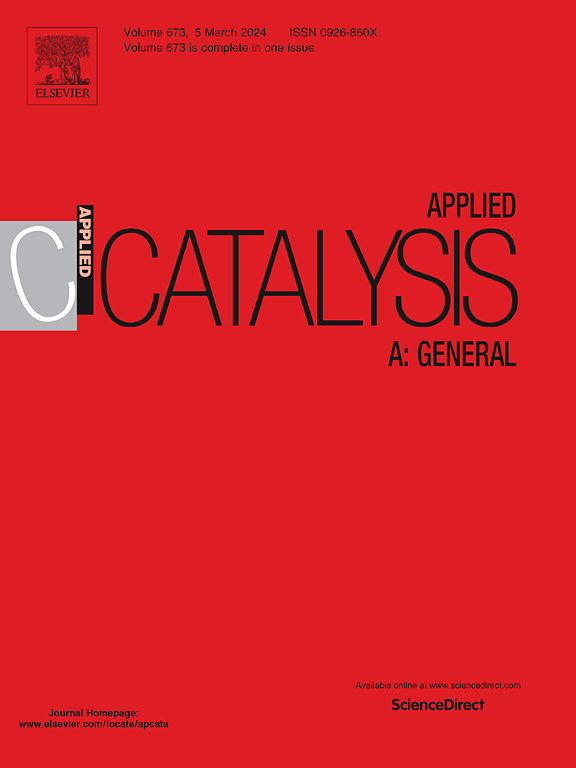Efficient desulfurization of model diesel fuel using an amphiphilic bimetallic synergistic catalyst Mo/Zn-EG-K
IF 4.8
2区 化学
Q2 CHEMISTRY, PHYSICAL
引用次数: 0
Abstract
Carbon-based materials, particularly expanded graphite (EG), serve as excellent catalyst supports due to their high surface area, mechanical stability, and defect-rich structure. This study developed an amphiphilic Mo/Zn-EG-K catalyst by anchoring Zn/Mo oxides on EG and modifying it with KH550 silane, balancing lipophilic (methoxy) and hydrophilic (amino) properties to enhance oxidative desulfurization (ODS) efficiency. Characterization (TEM, Py-IR, etc.) confirmed the catalyst’s structure and amphiphilicity. Under optimized conditions (60 °C, O/S=10, 60 min), 99.12 % dibenzothiophene (DBT) conversion was achieved, reducing sulfur content below 10 ppm—outperforming most Mo-based catalysts. The reaction followed first-order kinetics, and the catalyst retained 95 % activity after five cycles. Mechanistic studies revealed that Zn enhances surface electrophilicity, promoting H₂O₂ activation to generate •O₂⁻ radicals, which form reactive Mo(O₂) species. These intermediates selectively oxidize DBT into polar sulfoxides/sulfones, subsequently extracted by acetonitrile. The catalyst demonstrated strong performance in real diesel and continuous-flow systems, highlighting its industrial potential for ultra-deep desulfurization.
两亲性双金属催化剂Mo/Zn-EG-K对模型柴油的高效脱硫研究
碳基材料,特别是膨胀石墨(EG),由于其高表面积、机械稳定性和富含缺陷的结构,可以作为优良的催化剂载体。本研究通过将Zn/Mo氧化物锚定在EG上,并用KH550硅烷对其进行改性,平衡亲脂性(甲氧基)和亲水性(氨基),开发了一种两亲性Mo/Zn-EG- k催化剂,以提高氧化脱硫效率。表征(TEM, Py-IR等)证实了催化剂的结构和两亲性。在优化条件下(60 °C, O/S=10, 60 min),二苯并噻吩(DBT)转化率达到99.12 %,硫含量低于10 ppm,优于大多数钼基催化剂。反应符合一级动力学,催化剂在5个循环后仍保持95% %的活性。机理研究表明,锌增强表面亲电性,促进H₂O₂活化产生O₂毒枭,形成反应性Mo(O₂)。这些中间体选择性地将DBT氧化成极性亚砜,然后用乙腈提取。该催化剂在实际柴油和连续流系统中表现出了良好的性能,突出了其在超深度脱硫方面的工业潜力。
本文章由计算机程序翻译,如有差异,请以英文原文为准。
求助全文
约1分钟内获得全文
求助全文
来源期刊

Applied Catalysis A: General
化学-环境科学
CiteScore
9.00
自引率
5.50%
发文量
415
审稿时长
24 days
期刊介绍:
Applied Catalysis A: General publishes original papers on all aspects of catalysis of basic and practical interest to chemical scientists in both industrial and academic fields, with an emphasis onnew understanding of catalysts and catalytic reactions, new catalytic materials, new techniques, and new processes, especially those that have potential practical implications.
Papers that report results of a thorough study or optimization of systems or processes that are well understood, widely studied, or minor variations of known ones are discouraged. Authors should include statements in a separate section "Justification for Publication" of how the manuscript fits the scope of the journal in the cover letter to the editors. Submissions without such justification will be rejected without review.
 求助内容:
求助内容: 应助结果提醒方式:
应助结果提醒方式:


